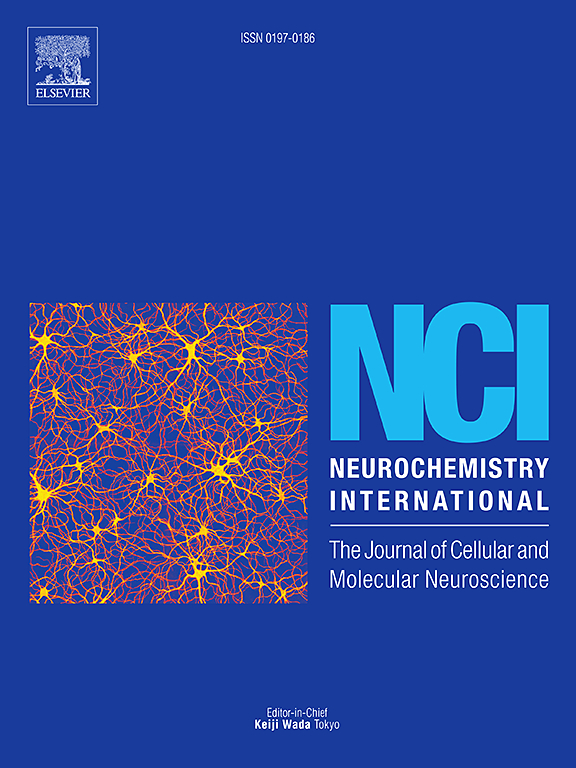Further characterisation of the intrastriatal 6-OHDA Parkinson's disease model with non-motor symptom replication and widespread catecholamine dysfunction in male mice
IF 4
3区 医学
Q2 BIOCHEMISTRY & MOLECULAR BIOLOGY
引用次数: 0
Abstract
The 6-OHDA mouse model of Parkinson's disease is not well characterised, with variable dosages, injection sites and timeframes. This study further characterised the unilateral intrastriatal 8 μg 6-OHDA mouse model using a four-week protocol, with replication of motor and some non-motor symptoms in male mice. Non-motor symptom replication included cognitive impairment and gastrointestinal dysfunction. Olfactory dysfunction and anxiety-like behaviour were unable to be replicated in this study. Parkinson's disease pathology, particularly non-motor pathology, was also investigated in this study which found the intrastriatal 6-OHDA lesion caused widespread catecholamine dysfunction outside of the nigrostriatal pathway, including the mesocortical and mesolimbic pathway. Proteins involved in neuroinflammation (GFAP), oxidative stress defence (SOD2) and synaptic proteins (SNAP25) were altered, as seen in Parkinson's disease pathology, in the brains of the 6-OHDA lesioned mice.

具有非运动症状复制和广泛儿茶酚胺功能障碍的雄性小鼠纹状体内6-OHDA帕金森病模型的进一步表征
6-OHDA帕金森病小鼠模型没有很好地表征,具有可变的剂量、注射部位和时间框架。本研究采用为期四周的方案进一步表征了单侧8μg - 6-OHDA小鼠胃内模型,在雄性小鼠中复制了运动和一些非运动症状。非运动症状复制包括认知障碍和胃肠功能障碍。嗅觉功能障碍和焦虑样行为在这项研究中无法被复制。本研究还研究了帕金森病的病理,特别是非运动病理,发现纹状体内6-OHDA病变引起黑质纹状体途径外的广泛儿茶酚胺功能障碍,包括中皮层和中边缘途径。在6-OHDA损伤小鼠的大脑中,参与神经炎症(GFAP)、氧化应激防御(SOD2)和突触蛋白(SNAP25)的蛋白质发生了改变,正如在帕金森病病理中看到的那样。
本文章由计算机程序翻译,如有差异,请以英文原文为准。
求助全文
约1分钟内获得全文
求助全文
来源期刊

Neurochemistry international
医学-神经科学
CiteScore
8.40
自引率
2.40%
发文量
128
审稿时长
37 days
期刊介绍:
Neurochemistry International is devoted to the rapid publication of outstanding original articles and timely reviews in neurochemistry. Manuscripts on a broad range of topics will be considered, including molecular and cellular neurochemistry, neuropharmacology and genetic aspects of CNS function, neuroimmunology, metabolism as well as the neurochemistry of neurological and psychiatric disorders of the CNS.
 求助内容:
求助内容: 应助结果提醒方式:
应助结果提醒方式:


